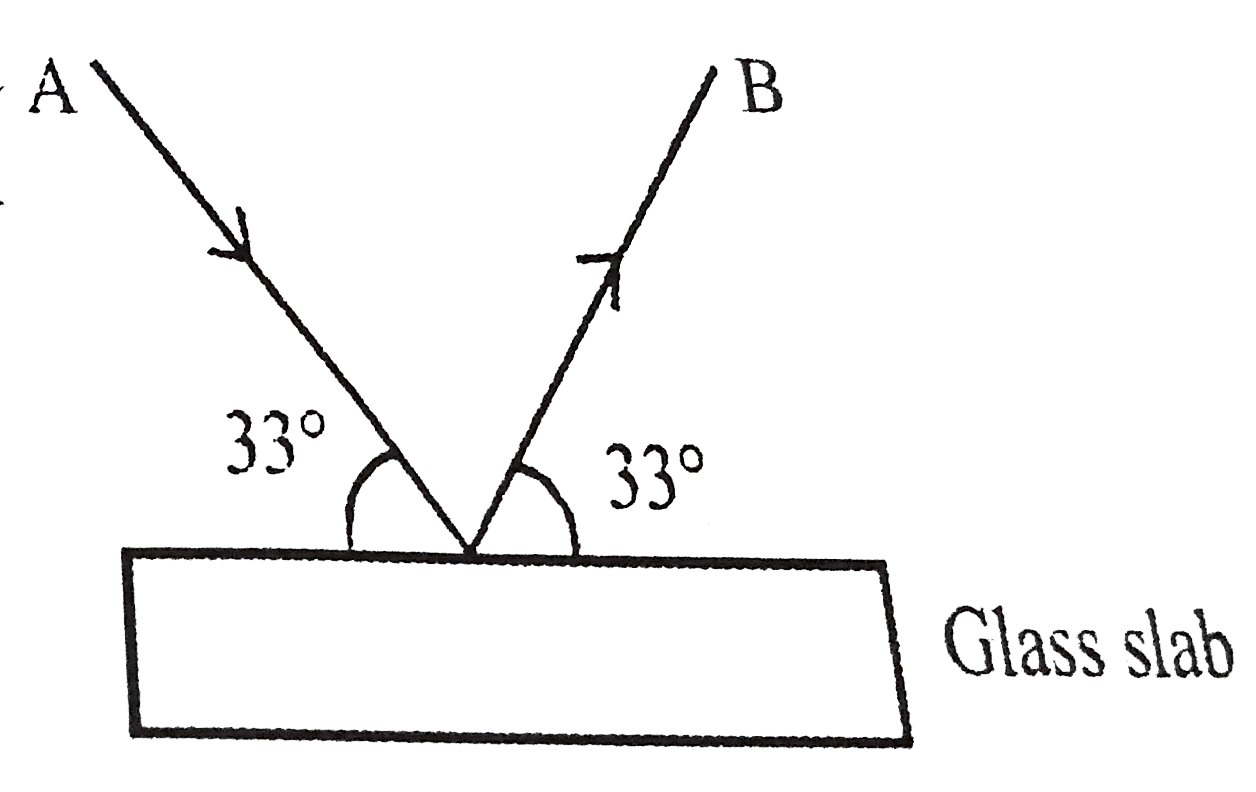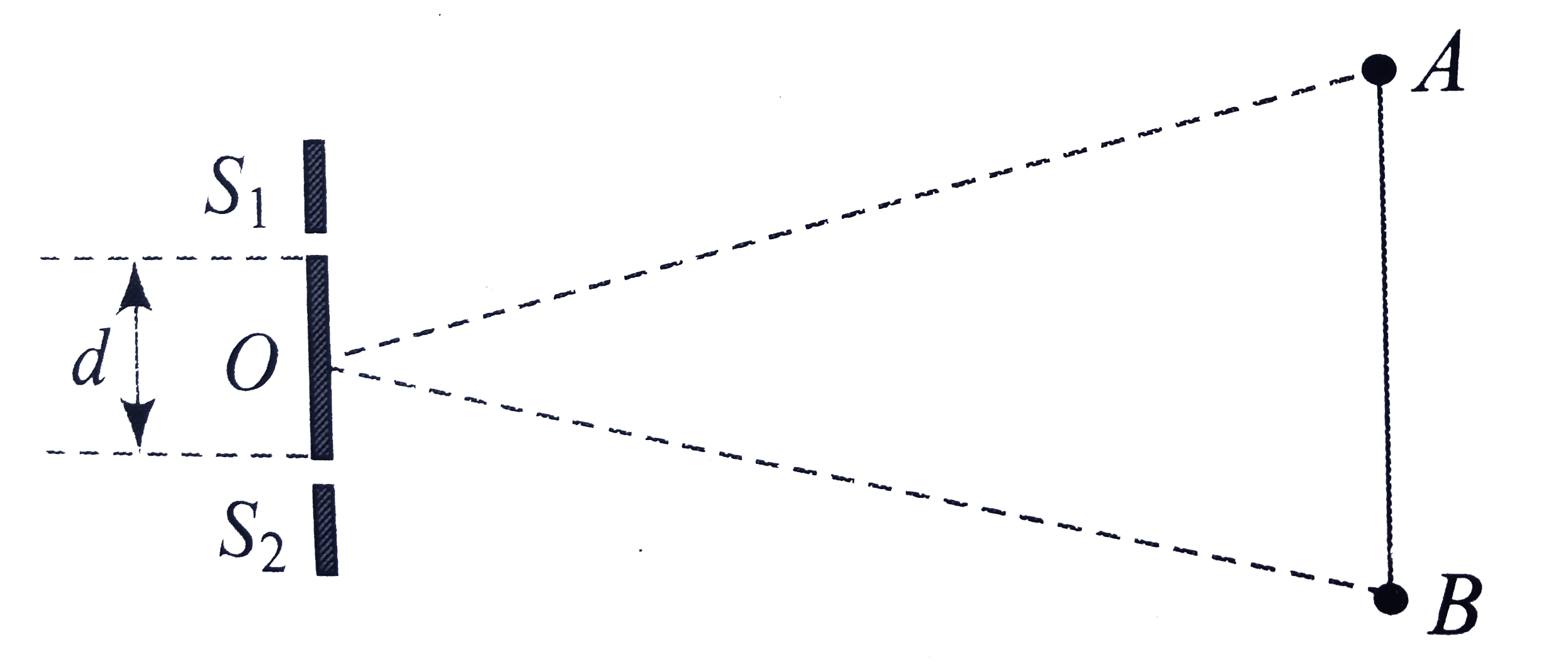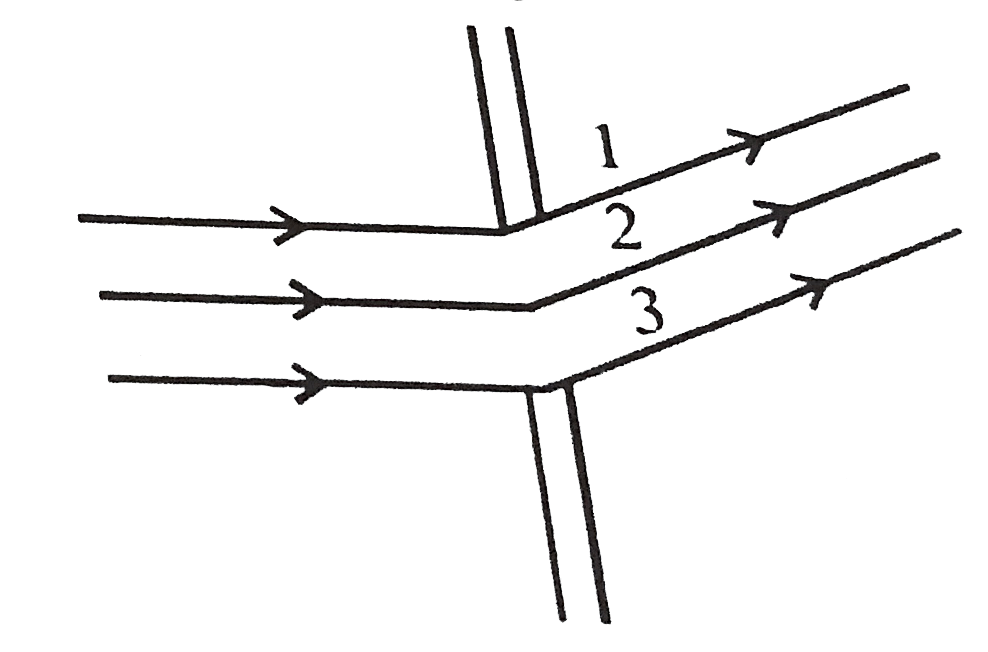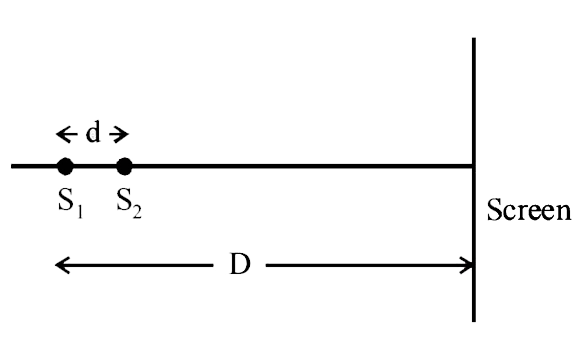Complete Solutions to PHYSICS of chapter WAVE OPTICS of Class 11 book with complete answers and questions
| Class 11 | PHYSICS |
| Chapter | WAVE OPTICS |
| DISHA | PHYSICS |
| Number Of Questions | 44 |
| Academic Year | 2023-24 |
In Young's double-slit experiment, the intensity of light at a point on the screen where the path difference is `lambda` is `I, lambda` being the wavelength of light used. The intensity at a point where the path difference is `lambda//4` will be
View SolutionA beam of light is incident on a glass slab `(mu = 1.54)` in a direction as shown in the figure. The reflected light is analysed by a polaroid prism. On rotating the polaroid, `(tan 57^(@) = 1.54)`
`
View SolutionTwo sources of light of wavelengths 2500 Å and 3500 Å are used in Young’s double slit expt. simultaneously. Which orders of fringes of two wavelength patterns coincide?
View SolutionFigure shows behavior of a wavefront when it passes through a prism.
Which of the following statements is/are correct ?

View SolutionWhen the angle of incidence is `60^(@)` on the surface of a glass slab, it is found that the reflected ray is completely polarised. The velocity of light in glass is
View SolutionFigure shows two coherent sources `S_(1)` and `S_(2)` vibrating in same phase. AB in an irregular wire lying at a far distance from the sources `S_(1)` and `S_(2). `Let `(lambda)/(d) = 10^(-3) /_ BOA = 0.12^(@)`. How many bright spots will be seen on the wire, including points A and B?

View SolutionTwo identical light waves, propagating in the same direction, have a phase difference `delta`. After they superpose, the intensity of the resulting wave will be proportional to
View SolutionIn YSDE, both slits are covered by transparent slab. Upper slit is covered by slab of R.I. 1.5 and thickness t and lower is
covered by R.I. `4/ 3` and thickness 2t, then central maxima
`
View SolutionA beam of light of wavelength 600 nm from a distant source
falls on a single slit 1.0 mm wide and the resulting diffraction pattern is
observed on a screen 2m away. What is the distance between the first dark
fringe on either side of the central bright fringe?
View SolutionA parallel beam of light of wavelength l is incident normally on a narrow slit. A diffraction pattern is formed on a screen placed perpendicular to the direction of the incident beam. At the second minimum of the diffraction pattern, the phase difference between the rays coming from the two edges of slit is
View SolutionThe diffraction effects in a microscopic specimen become important when the separation between two points is
View SolutionOn a rainy day, if there is an oil drop on tar road coloured rings are seen around this drop. This is due to
View SolutionIn a Young's double slit experiment the intensity at a point where tha path difference is `(lamda)/(6)` (`lamda` being the wavelength of light used) is I. If `I_0` denotes the maximum intensity, `(I)/(I_0)` is equal to
View SolutionAccording to Huygens, medium through which light waves travel is
View SolutionIf we observe the single slit Fraunhofer diffraction with wavelength `lambda` and slit width d, the width of the central maxima is `2theta`. On decreasing the slit width for the same `lambda`
View SolutionAperture of the human eye is 2 mm. Assuming the mean wavelength of light to be 5000 Å, the angular resolution limit of the eye is nearly
View SolutionUnpolarised light is incident on a dielectric of refractive indexspt`sqrt 3`. What is the angle of incidence if the reflected beam is completely polarised?
View Solution_E01_080_Q01.png)
The figure shows the interfernece pattern obtained in double slit experiment using light of wavelength 600 nm.
Q. The third order bright fringe is
View SolutionWhich of the following diagrams represent the veriation of electric field vector with time for a circularly polarised light
View SolutionWith a monochromatic light, the fringe-width obtained in a Young’s double slit experiment is 0.133 cm. The whole set- up is immersed in water of refractive index 1.33, then the new fringe-width is
View SolutionThe condition for obtaining secondary maxima in the diffraction pattern due to single slit is
View SolutionIn double slit experiment, the angular width of the fringes is `0.20^@` for the sodium light `(lambda=5890Å)`. In order to increase the angular width of the fringes by `10%`, the necessary change in the wavelength is
View Solutionn Young's double slit experiment with sodium vapour lamp of wavelength 589 nm and the slits 0.589 mm apart, the half angular width of the central maximum is
View SolutionThe adjacent figure shows Fraunhoffer’s diffraction due to a single slit. If first minimum is obtained in the direction shown, then the path difference between rays 1 and 3 is

View SolutionYoung's double-slit experiment is conducted in water `(mu_(1))` as shown in figure and a glass plate of thickness t and refractive index `mu_(2)` is placed in the path of `S_(2)`. Find the magnitude of the optical path difference at 'O'.

View SolutionIn a Fresnel biprism experiment, the two positions of lens give separation between the slits as 16cm and 9cm respectively. What is the actual distance of separation?
View SolutionIf two waves represented by `y_1=4sin omega t` and `y_2=3sin (omegat+pi/3)` interfere at a point, the amplitude of the resulting wave will be about
View SolutionIn Young's double-slit experiment, the separation between the slits is halved and the distance between the slits and the screen in doubled. The fringe width is
View SolutionAt the first minimum adjacent to the central maximum of a single-slit diffraction pattern the phase difference between the Huygens wavelet from the edge of the slit and the wavelet from the mid-point of the slit is
View SolutionThe central fringe of the interference pattern produced by the light of wavelength 6000 Å is found to shift to the position of 4th dark fringe after a glass sheet of refractive index 1.5 is introduced. The thickness of glass sheet would be
View SolutionSodium light `(lambda= 6xx 10^(-7)m)` is used to produce interference pattern. The observed fringe width is 0.12 mm. The angle between two interfering wave trains, is
View SolutionThe Young's double slit experiment is performed with blue light and green light of wavelength `4360 Å` and `5460 Å` respectively. If y is the distance of `4th` maxima from the central one, then
View SolutionYellow light emitted by sodium lamp in Young's double slit experiment is replaced by monochromatic blue light of the same intensity:
View SolutionWhen unpolarised light is incident on a plane glass plate at Brewster’s angle, then which of the following statements is correct?
View SolutionThe maximum number of possible interference maxima for slit-separation equal to twice the wavelength in Young's double-slit experiment is
View SolutionIn figure, if a parallel beam of white light is incident on the plane of the slit, then the distance of the nearest white spot on the screen form O is [assume `d lt lt D, lambda lt lt D`]

View SolutionTwo light waves superimposing at the mid-point of the screen are coming from coherent sources of light with phase difference 3p rad. Their amplitudes are 1 cm each. The resultant amplitude at the given point will be.
View SolutionSpherical wavefronts, emanating from a point source, strike a plane reflecting surface. What will happen to these wave fronts, immediately after reflection?
View SolutionTwo coherent point sources `S_1` and `S_2` are separated by a small distance `d` as shown. The fringes obtained on the screen will be

View SolutionOn a hot summer night, the refractive index of air is smallest near the ground and increases with height from the ground. When a light beam is directed horizontally, the Huygens` principal leads us to conclude that as it travels, the light beam:
View SolutionIf `I_0` is the intensity of the principal maximum in the single slit diffraction pattern. Then what will be its intensity when the slit width is doubled?
View SolutionConditions of diffraction is
View SolutionIn Fresnel's biprism experiment a mica sheet of refractive index 1.5 and thickness `6xx10^(-6)m` is palced in the path of one of interfering beams as a result of which the central fringe gets shifted through five fringe widths. Then calculate the wavelength of light.
View SolutionTwo Nicols are oriented with their principal planes making an angle of `60^@`. The percentage of incident unpolarised light which passes through the system is
View Solution
PHYSICS questions and complete solutions for chapter WAVE OPTICS of DISHA PHYSICS (HINGLISH) of Class 11